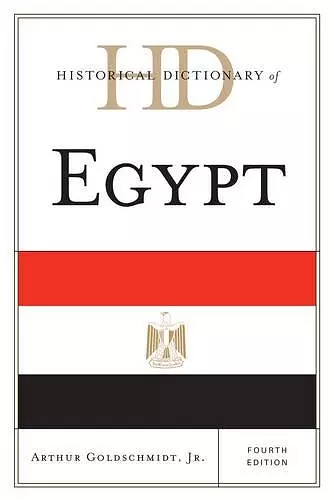Historical Dictionary of Egypt
Format:Hardback
Publisher:Scarecrow Press
Published:10th Oct '13
Currently unavailable, and unfortunately no date known when it will be back

Egypt’s was the first non-Western country to undergo an industrial revolution. It was a major commercial center during the 19th and early 20th centuries. It was one of the first countries to have (albeit briefly) a constitutional government. Its struggle for independence was among the earliest in the non-Western world. Its capital, Cairo, has served as a headquarters and a meeting place for nationalist leaders. Its schools and universities attracted students from many other African and Asian countries. For the Arab world, its educational and legal institutions set the pattern that most other Arabic-speaking countries have followed. Its books, magazines, and newspapers circulate widely. Its radio and television broadcasting became the model for other Arab states. The leadership of Jamal Abd al-Nasir and Anwar al-Sadat profoundly influenced other Arab and Third World leaders. And the demonstrations in Cairo’s Tahrir Square became the iconic movement for the so-called “Arab Spring” in the rest of the Middle East. This fourth edition of Historical Dictionary of Egypt covers its history from its emergence as an independent actor during the reign of Ali Bey (1760-1772) up to and including the first two years of the Arab Spring (February 2013). This is done through a chronology, an introductory essay, appendixes, and an extensive bibliography. The dictionary section has over 700 cross-referenced entries on of persons, events, institutions, political groups, economic and social conditions, policies, relationships with other countries, ideas, religions, ideologies, and commodities relevant to the modern history of Egypt. This book is an excellent access point for students, researchers, and anyone wanting to know more about Egypt.
This updated dictionary, written by a well-known scholar of Middle Eastern history, focuses on the people, places, and institutions of the last two centuries of Egyptian history. This work covers Egypt's history from its emergences during the reign of Ali Bey (1760-1772) up to the first two years of the Arab Spring. It includes information on the leadership of Jamal Abd al-Nasir and Anwar al-Sadat as well as the recent demonstrations in Cairo's Tahrir Square that have become an iconic movement in the Middle East. It is enhanced by a complete list of political leaders since 1878, followed by an extensive bibliographic essay and a bibliography ordered by time period. The bibliography refers the reader to Websites as well as to print materials and is organized by themes (e.g., theater, women). Because of its comprehensiveness and its currency, this volume belongs in every central public library and the libraries of every college and university, as well as in libraries easily accessible to media researchers, legislators, and other government officials so that they may not only have ready access to the historical background of the area but also may check quickly on virtually any aspect of this important crossroads country. * American Reference Books Annual *
ISBN: 9780810861893
Dimensions: 237mm x 160mm x 49mm
Weight: 1002g
588 pages
Fourth Edition